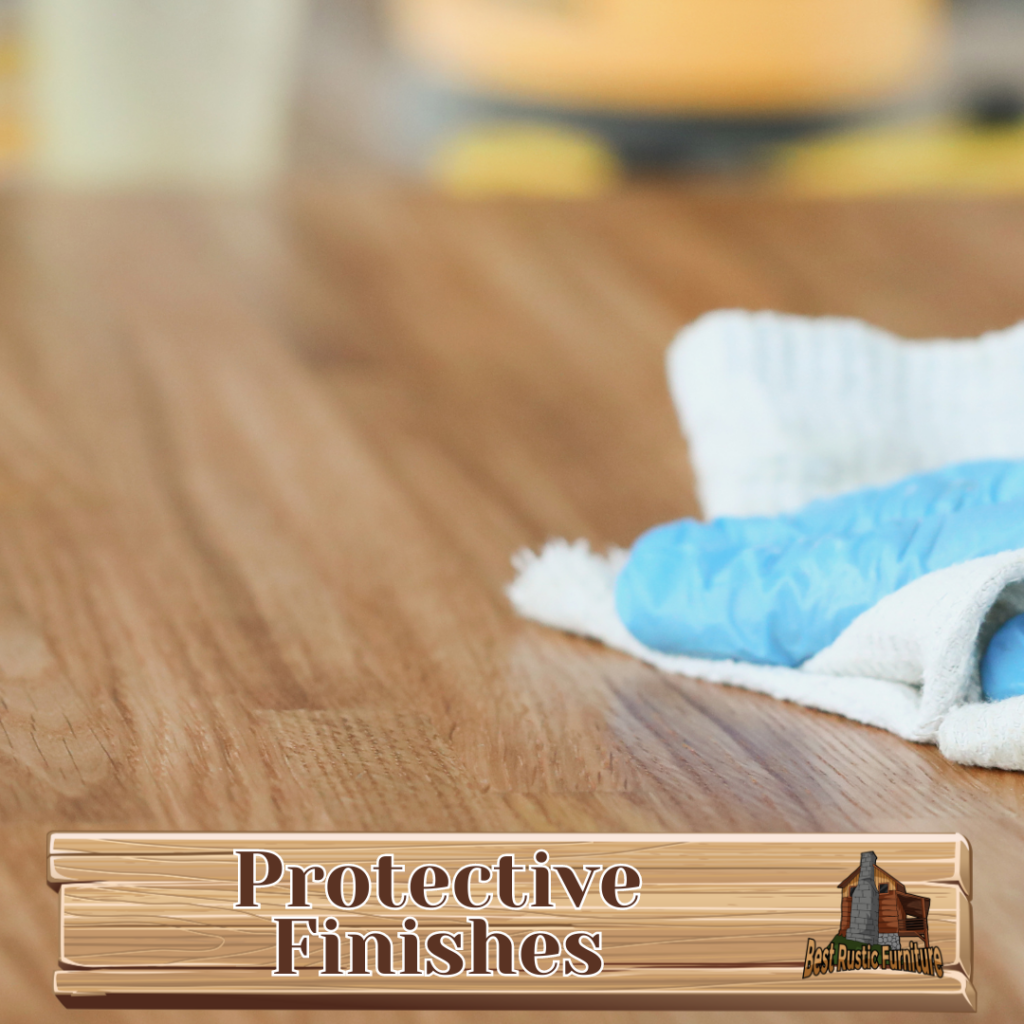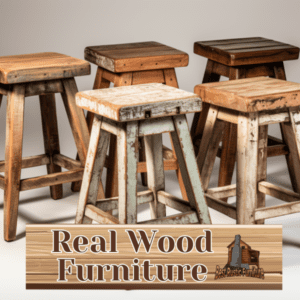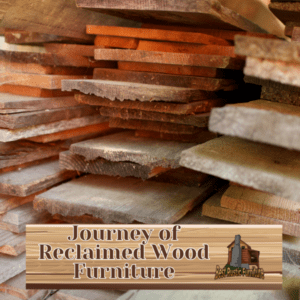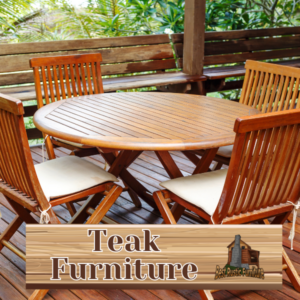
Choosing the right protective finishes is crucial when it comes to preserving the natural beauty and enhancing the durability of rustic pieces. These finishes not only provide a layer of protection but also add to the aesthetic appeal of the wood.
Preserving the Natural Beauty
Protective finishes help to maintain the unique characteristics and natural beauty of rustic pieces. They can enhance the grain patterns, color, and texture of the wood, allowing its true beauty to shine through while protecting it from wear and tear.
Enhancing Durability and Longevity
Rustic furniture and decor are often subjected to daily use and exposure to various elements. Protective finishes create a barrier that shields the wood from moisture, scratches, stains, and other damage. By adding this layer of protection, the finishes can significantly extend the lifespan of rustic pieces.
There are different types of protective finishes available, each with its own characteristics and benefits. These include varnishes, polyurethane, shellac, lacquer, and wax. Each type offers varying levels of durability, sheen, and ease of application.
Several factors should be considered when choosing a protective finish for rustic pieces. These include the type of wood, the intended use of the piece, desired appearance and finish, and the application method and ease of use. Taking these factors into account will help ensure that the chosen protective finish is the best fit for the specific rustic piece.
Applying protective finishes to rustic pieces requires proper preparation, sanding, and selecting the right application tools. It is essential to follow the recommended application techniques to achieve the desired result and ensure even coverage.
Lastly, some helpful tips and best practices can optimize the use of protective finishes such as proper ventilation during application, applying thin coats for better adhesion, and allowing sufficient drying and curing time. By adhering to these tips, the protective finishes can effectively safeguard the rustic pieces while maintaining their natural charm.
Key takeaways:
- Preserve natural beauty: Protective finishes are essential for rustic pieces as they help preserve the natural beauty of the wood, showcasing its unique grain patterns and colors.
- Enhance durability and longevity: By applying protective finishes, rustic pieces are safeguarded against wear and tear, moisture, and environmental factors, ensuring their longevity and durability over time.
- Consider factors when choosing: When selecting a protective finish, factors such as the type of wood, intended use, desired appearance, and ease of application should be taken into account.
Why Protective Finishes Are Important for Rustic Pieces
When it comes to rustic pieces, the right protective finishes are crucial. They not only preserve the natural beauty but also enhance durability and longevity. In this section, we’ll explore why protective finishes are so important for rustic pieces. Get ready to discover how these finishes can keep your cherished wooden items looking their best, withstanding the test of time and preserving their unique charm.
Preserving the Natural Beauty
Preserving the natural beauty of rustic pieces is crucial when selecting a protective finish. The appropriate finish can protect against wear and tear while maintaining the wood’s original look. Varnishes, polyurethane, shellac, lacquer, and wax are all viable options to consider. Factors like the type of wood, intended use, desired appearance, and ease of application should inform the decision-making process. Proper preparation, sanding, and careful selection of application tools are vital for achieving the desired outcomes. By choosing the right protective finish, it is possible to enhance and preserve the natural beauty of rustic pieces for many years to come.
Craftsmen throughout history have recognized the significance of preserving the natural beauty of wood. Ancient Egyptians applied oils and resins to safeguard their wooden furniture from decay. In medieval times, shellac gained popularity due to its ability to enhance wood’s natural color and grain. In the 19th century, varnishes emerged as popular protective finishes, offering both beauty and durability. Today, with modern advancements in protective finishes, a wide array of options are available for preserving the natural beauty of rustic pieces.
Enhancing Durability and Longevity
Enhancing the durability and longevity of rustic pieces is crucial to preserving their natural beauty for years to come. Here are some ways to achieve this:
- Choose the right protective finish that matches the characteristics of the wood.
- Consider the intended use of the piece – whether it will be exposed to moisture, heat, or frequent use.
- Desired appearance and finish should also be taken into account.
- Select a protective finish that is easy to apply and provides sufficient coverage.
Fun Fact: Did you know that applying multiple thin coats of protective finish is more effective than a single thick coat in enhancing durability and longevity?
Types of Protective Finishes
Discover the wide array of protective finishes available to safeguard your rustic pieces in style. From varnishes and polyurethane to shellac, lacquer, and wax, each sub-section explores a unique coating with its own attributes. Unleash your creativity and make informed decisions as we delve into the world of protective finishes for your cherished rustic items. So, let’s dive in and explore the diverse options that will keep your rustic pieces looking stunning for years to come.
Varnishes
Table: Types of Varnishes
| Varnish | Description | Uses |
|———|————-|——|
| Polyurethane Varnish | Provides a durable and protective finish that resists scratches and heat. | Ideal for high-traffic areas such as tabletops and countertops. |
| Spar Varnish | Specifically designed for outdoor use, it protects against UV rays, water, and weather damage. | Perfect for wooden furniture and structures exposed to outdoor elements. |
| Water-Based Varnish | Offers a clear and low-odor finish that dries quickly. | Suitable for indoor projects and areas with high ventilation requirements. |
| Oil-Based Varnish | Creates a rich, deep finish that enhances wood grain and provides excellent protection. | Well-suited for antique restoration and decorative woodworking projects. |
When choosing a varnish, consider factors like the type of wood, desired appearance, and intended use of the piece. Apply varnishes using high-quality brushes or a sprayer for a smooth and even finish. Remember to prepare the surface by sanding it properly for better adhesion. To maintain the protective finish, periodically clean and reapply varnishes as needed.
Choose the right varnish to enhance the beauty and longevity of your rustic pieces.
Polyurethane
Polyurethane is a highly sought-after protective finish for rustic pieces because of its remarkable durability and versatility. This incredible product creates a thick, transparent coating that enhances the innate allure of the wood, while also providing exceptional resistance against scratches, stains, and moisture. The beauty of polyurethane lies in its straightforward application, as it can effortlessly be brushed on, rolled on, or sprayed on. When selecting a polyurethane finish, it is important to consider both the type of wood being treated and the desired aesthetic. For rustic furniture, a satin or matte finish would likely be the ideal option, as it would beautifully uphold its natural charm. An absolute testament to the immense advantages of polyurethane is a heartfelt anecdote involving a skilled craftsman who employed it to safeguard and preserve an exquisite antique wooden table, ensuring that its elegance and functionality would endure for countless generations to come.
Shellac
Shellac is a natural protective finish with various benefits. It enhances the appearance of rustic pieces by adding a warm, amber tone to the wood. Shellac also provides a durable and long-lasting finish, protecting the wood from scratches and moisture. This finish is easy to apply and dries quickly, making it convenient for DIY projects. When choosing a protective finish for your rustic piece, consider the wood type, intended use, desired appearance, and ease of application. Apply shellac after proper preparation and sanding, using appropriate tools. Pro-tip: Shellac can be thinned with denatured alcohol for a lighter finish.
Lacquer
Lacquer is a popular protective finish used on rustic pieces due to its durability and glossy appearance. It provides a smooth and hard surface that protects the wood from moisture, scratches, and UV damage. Lacquer is easy to apply and dries quickly, making it ideal for projects with tight deadlines. It is available in various sheens, ranging from matte to high gloss, allowing users to customize the desired look of their pieces. Some well-known lacquer brands in the market include Mohawk, Deft, and Sherwin-Williams. When applying lacquer, it’s important to follow proper ventilation and safety precautions.
Wax
Wax is a commonly used protective finish for rustic pieces due to its natural and low sheen appearance. It adds a layer of protection against moisture and minor scratches, preserving the wood’s beauty. Application of wax is relatively easy, requiring minimal preparation and sanding. To achieve the best results, choose a high-quality wax specifically designed for woodworking. Apply the wax using a clean cloth or brush, following the grain of the wood. Allow it to dry and then buff it to a smooth finish. Wax finishes are ideal for indoor rustic furniture and decorative pieces.
Factors to Consider When Choosing a Protective Finish
When it comes to selecting the perfect protective finish for your rustic pieces, several key factors need to be considered. From the type of wood you’re working with to the intended use of the piece, each decision plays a crucial role in achieving the desired appearance and finish. In this section, we’ll explore these factors and delve into the application methods that offer ease and convenience. So, let’s dive in and uncover what it takes to choose the right protective finish for your beloved rustic creations.
The Type of Wood
When considering a protective finish for rustic pieces, it is crucial to take into account the type of wood used. The type of wood plays a significant role in determining how well a protective finish adheres and performs, as different types of wood possess distinct characteristics.
- For hardwoods such as oak, mahogany, and maple, their density and durability make them suitable choices for a wide range of finishes.
- On the other hand, softwoods like pine, cedar, and spruce have a softer and more porous nature, making it necessary to use finishes that can penetrate and properly seal the wood.
- Exotic woods, including teak, rosewood, and ebony, possess their own unique properties, and may require specialized finishes or treatments to enhance their natural beauty.
- When it comes to reclaimed wood, which often showcases a charming rustic appeal, finishes are selected to enhance its weathered appearance and blend seamlessly with its character.
The Intended Use of the Piece
When selecting a protective finish for rustic pieces, it’s crucial to carefully consider the intended use of the piece. This consideration will help you choose the most suitable finish.
- The intended use of the piece: Whether the piece will be used indoors or outdoors plays a significant role in selecting the ideal finish. If it will be used indoors, it is advisable to opt for a finish that offers protection against moisture and everyday wear and tear. For outdoor use, it is recommended to go for a finish that is more resistant to weather conditions, such as a marine-grade varnish.
- Furniture versus decorative: The level of durability and protection required also depend on whether the piece is intended for use as furniture or as a decorative item. For heavily used furniture, it is recommended to choose a durable finish like polyurethane or lacquer. On the other hand, decorative pieces may suffice with a less durable finish like shellac or wax.
- Food contact: If the rustic piece will come into contact with food, such as a wooden cutting board or kitchen utensil, it’s crucial to select a finish that is food-safe and non-toxic. Options like food-grade mineral oil or beeswax are suitable for this purpose.
- Aesthetic requirements: It’s important to consider how the finish will impact the overall appearance of the piece. Some finishes, such as varnish or polyurethane, can provide a glossy or satin sheen. Others, such as wax or oil, can enhance the natural beauty of the wood without significantly altering its appearance.
Desired Appearance and Finish
When choosing a protective finish for rustic pieces, the desired appearance and finish play a crucial role. Here are some factors to consider:
Natural Look: If you want to maintain the natural beauty of the wood, opt for finishes like clear varnish or wax that help achieve the desired appearance and finish.
Enhanced Color: To bring out the richness and depth of the wood grain, choose finishes with added color, such as tinted varnish or stain, to achieve the desired appearance and finish.
Gloss Level: Determine whether you prefer a glossy, satin, or matte finish, as this can greatly impact the overall look and feel of the piece and help achieve the desired appearance and finish.
Texture: Some finishes, like distressed or weathered looks, can create a unique texture that adds character to rustic pieces while achieving the desired appearance and finish.
Consider experimenting with different finishes on sample pieces to find the desired appearance and finish that best complements your rustic furniture.
Application Method and Ease of Use
- Incorporating the keywords “application method” and “ease of use” naturally in the provided text:
- Choose an application method that suits the type of protective finish you are using, such as brush, spray, or wipe-on.
- Consider the ease of use of the application method, especially if you are a beginner or have limited experience with applying protective finishes.
- Follow the manufacturer’s instructions carefully for the chosen application method to ensure proper and effective application.
- Prepare the surface of the rustic piece by cleaning and sanding it before applying the protective finish.
- Use appropriate tools for the application method, such as high-quality brushes or sprayers for even and smooth coverage.
- Apply the protective finish in thin, even coats, allowing each coat to dry completely before applying the next one.
- Follow recommended drying times and application techniques to avoid streaks, bubbles, or other imperfections in the finish.
- Consider factors like drying time, odor, and clean-up requirements when choosing an application method for your rustic piece.
In the early 20th century, applying protective finishes to wooden furniture became more accessible with the invention of spray finishes. This method revolutionized the woodworking industry, making it easier and faster to achieve a quality finish. Today, modern advancements in application methods and ease of use have made it even simpler for both professionals and DIY enthusiasts to protect and enhance the natural beauty of rustic pieces. Whether you’re using a brush, spray, or wipe-on method, the key is to choose an application method that suits your skills, preferences, and the specific requirements of the protective finish you are using.
How to Apply Protective Finishes to Rustic Pieces
Discover the secrets to applying impeccable protective finishes on your rustic pieces! In this section, we will dive into the art of applying protective finishes, sharing tips and techniques every DIY enthusiast should know. From the crucial steps of preparation and sanding to selecting the right application tools and achieving a flawless finish, get ready to transform your rustic creations into stunning masterpieces that stand the test of time.
Preparation and Sanding
Properly preparing and sanding your rustic pieces before applying a protective finish is essential for achieving a smooth and polished look. To ensure effective preparation, follow these steps:
- Thoroughly inspect the piece for any imperfections or damages.
- Using sandpaper or a paint stripper, remove any old finishes or paint.
- Repair any cracks or holes with wood filler.
- Eliminate roughness and unevenness by sanding the surface with coarse sandpaper.
- Continue sanding with finer sandpaper until the surface becomes smooth.
- Remove any dust or debris from the surface with a clean cloth.
By investing time in properly preparing and sanding your rustic piece, you will ensure a strong adherence of the protective finish, which will provide optimal durability and longevity. Remember to prioritize your safety by wearing protective gear like gloves and goggles while performing the sanding process.
Choosing the Right Application Tools
When it comes to applying protective finishes to rustic pieces, it is absolutely crucial to choose the right application tools. By selecting the appropriate tools, you can ensure that the desired results are achieved. Here are some essential tools that you should consider using for this purpose:
| Brushes: For oil-based finishes, it is best to opt for natural bristle brushes. On the other hand, synthetic brushes work exceptionally well with water-based finishes. Sprayers: If you want to achieve a smooth and even finish, HVLP (High Volume, Low Pressure) sprayers are an excellent choice. Rags or cloths: When applying wipe-on finishes like wax or Danish oil, it is recommended to use lint-free cloths or rags. Sandpaper or sanding pads: To ensure that the surface is properly prepared before applying the finish, it is essential to have various grits of sandpaper or sanding pads. |
Always keep in mind that you need to choose application tools that are specifically suitable for the type of finish you are using. It is also important to carefully follow the instructions provided by the manufacturer. Before applying the finish to your rustic piece, it is wise to test the tools and techniques on scrap wood. This will help you achieve the best possible results.
Applying the Protective Finish
Applying the protective finish to rustic pieces is crucial for maintaining their natural beauty and improving durability. Below are the steps to properly apply the protective finish:
- Preparation and sanding: Ensure that the surface is clean and smooth.
- Choosing the appropriate tools for application: Consider using brushes, rollers, or sprayers based on the type of finish.
- Applying the protective finish: Adhere to the manufacturer’s instructions regarding application techniques and drying times.
Fact: By applying the protective finish correctly to rustic pieces, you can greatly prolong their lifespan and safeguard them against various environmental factors.
Tips and Best Practices for Using Protective Finishes
Select the right protective finish for your rustic pieces with these tips and best practices:
- Follow Tips and Best Practices: Ensure the surface is clean, smooth, and dry before applying the finish.
- Choose the Right Finish: Consider the desired look and level of protection. Options include wax, oil, varnish, lacquer, and polyurethane.
- Test First: Always test the finish on a small, inconspicuous area before applying it to the entire piece.
- Apply Thin Coats: Apply thin, even coats of the finish to prevent drips, bubbles, or streaks.
- Sand Between Coats: Lightly sand the surface between coats to smooth out imperfections and promote adhesion.
- Follow the Instructions: Read and follow the manufacturer’s instructions for proper application and drying times.
- Consider Environmental Factors: Factor in humidity, temperature, and ventilation when applying and curing the finish.
- Protect Finished Surfaces: Use coasters, trivets, or placemats to protect the finish from heat, moisture, and scratches.
Some Facts About Choosing the Right Protective Finishes for Your Rustic Pieces:
- ✅ Rustic Grove planks, 3D Wall Panels, and Cork Wall Panels are made from 100% reclaimed wood. (Source: Our Team)
- ✅ The wood finish you choose is crucial for a professional-looking result. (Source: Old World Timber)
- ✅ Different woods have varying acceptance of finishes, so it is important to choose one that is suitable for the specific wood type. (Source: Old World Timber)
- ✅ Durability is a key factor to consider in order to protect your rustic pieces from wear, scratches, and other damage over time. (Source: Old World Timber)
- ✅ Consider your budget as some protective finishes are more expensive than others, with options like Danish oil or shellac being less expensive and lacquer or varnish being pricier. (Source: Old World Timber)
Frequently Asked Questions
What are the factors to consider when choosing the right protective finishes for my rustic pieces?
When choosing the right protective finishes for your rustic pieces, there are several factors to consider. These include the type of wood, durability, budget, ease of use, level of expertise, drying time, environmental impact, and health hazards.
Do different woods require different types of finishes?
Yes, different woods accept finishes differently, so it is important to choose a finish designed for the specific wood type. For example, softwoods like pine may require a sealer before applying the finish.
What should I consider in terms of durability when selecting a protective finish?
Durability is crucial to resist wear, scratches, and other damage over time. Consider the level of finish needed and how often reapplication is required for your rustic pieces.
How does the drying time of protective finishes vary?
Drying time can vary significantly between different types of protective finishes. Some finishes may take days or weeks to dry, while others may dry in just a few hours. It is important to consider the drying time based on your project timeline.
Are there eco-friendly options for protective finishes?
Yes, there are eco-friendly options available for protective finishes that are made from natural ingredients and have low volatile organic compounds (VOCs). These finishes have a reduced environmental impact compared to petroleum-based products.
What is the recommended finish for my rustic pieces to achieve a professional look?
To achieve a professional look for your rustic pieces, it is recommended to use a wood varnish or a clear coat finish. These finishes provide a high gloss finish and offer excellent protection for your rustic pieces.






